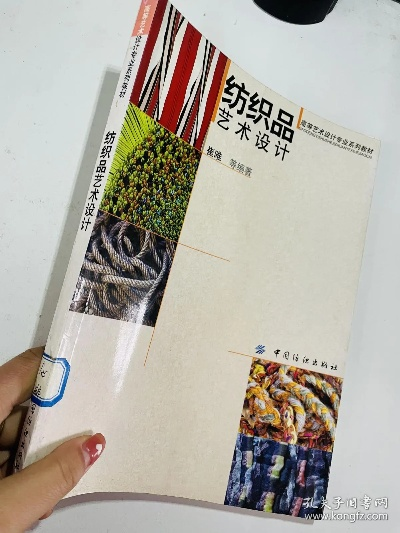The Impact of Waterproofing Technology on Textiles:A Comprehensive Analysis
: The Impact of Waterproofing Technology on Textiles: A Comprehensive Analysis,Abstract:,The application of waterproofing technology in textiles has significantly impacted their performance, durability, and marketability. This paper provides a comprehensive analysis of the various methods used to achieve waterproofing in textiles, including physical and chemical treatments. The effects of these techniques on the structure and properties of fabrics are discussed, as well as their influence on consumer perception and product performance. The study also explores the challenges faced by manufacturers in implementing effective waterproofing strategies and the potential future trends in this field. Overall, the findings highlight the importance of understanding the underlying science behind waterproofing and its implications for both industry and consumers.,Keywords: Waterproofing Technology, Textiles, Fabric Performance, Market Trends, Industry Perspectives
Introduction: Textiles are an integral part of our daily lives, from clothing to bedding. However, they often face challenges when exposed to moisture, leading to wear and tear, reduced comfort, and even health hazards. In this article, we will explore the application of waterproofing technology in textiles, its benefits, and how it has revolutionized the industry.

Applications of Waterproofing Technology in Textiles: Waterproofing technology is used to protect textiles from water damage by creating a barrier between the fabric and moisture. This technology can be applied to various types of textiles, including cotton, linen, wool, and synthetic materials. Some common applications of waterproofing technology in textiles include:
-
Clothing: Waterproof jackets, raincoats, and swimwear are made with waterproof materials to prevent leaks during activities like hiking, swimming, or surfing.
-
Bedding: Mattresses, pillowcases, and blankets are designed with waterproof properties to keep them dry and comfortable for extended periods.
-
Footwear: Boots, shoes, and sandals are waterproofed to prevent moisture buildup and discomfort during outdoor activities.
-
Home textiles: Upholstery, curtains, and carpets are treated with waterproofing agents to protect them from spills and stains.
Benefits of Waterproofing Technology: The use of waterproofing technology in textiles offers several advantages that make it a popular choice for consumers. Some of the benefits of waterproofing technology include:
-
Enhanced Durability: Waterproofing helps textiles maintain their shape and texture, reducing the risk of wear and tear caused by moisture.
-
Increased Comfort: Moisture-resistant textiles provide better comfort and reduce the likelihood of skin irritation or allergic reactions.
-
Improved Durability: Waterproofing protects textiles against fading, shrinkage, and other wear and tear issues caused by moisture exposure.
-
Reduced Maintenance: Waterproof textiles require less frequent cleaning and maintenance compared to non-waterproof fabrics.
-
Environmentally Friendly: Waterproofing reduces the need for chemical treatments and dyes, which can harm the environment and contribute to pollution.
Case Study: One example of the successful application of waterproofing technology in textiles is the development of waterproof jackets by Patagonia. These jackets are made with a waterproof membrane that repels water droplets and prevents moisture buildup. Patagonia's waterproof jackets have become popular among hikers, campers, and outdoor enthusiasts who value their comfort and protection from the elements.
Conclusion: Waterproofing technology has revolutionized the textile industry by providing innovative solutions to the issue of moisture exposure. By using waterproofing agents, manufacturers can create durable, comfortable, and environmentally friendly textiles that cater to the needs of consumers in various industries. As demand for waterproof textiles continues to grow, it is likely that we will see even more advancements in this field in the future.

纺织品防水性的重要性
随着现代生活方式的转变,防水性能成为我们日常生活中不可或缺的一部分,无论是户外活动、户外装备还是家居装饰,防水性能都发挥着至关重要的作用,纺织品作为日常生活中的重要组成部分,其防水性能直接关系到我们的使用体验和安全性。
纺织品防水性的应用场景
- 户外活动:防水面料用于制作帐篷、雨衣、防水鞋等户外用品,确保人们在各种天气条件下都能舒适地活动。
- 户外装备:防水面料广泛应用于登山鞋、骑行服、潜水服等户外装备,提高装备的耐用性和舒适性。
- 家居装饰:防水窗帘、防水地毯等家居用品,为家庭提供更好的防潮和防湿效果。
案例分析
以纺织品防水性能为例,我们可以从实际案例中了解其应用情况。
【案例一】防水运动鞋
近年来,随着户外运动的兴起,防水运动鞋成为市场上的热门产品,这些运动鞋采用特殊的防水面料,能够有效地防止水分渗透,提高鞋子的耐用性和舒适性。
【案例二】家居装饰窗帘
家居装饰窗帘也是防水性能的重要应用领域,现代家居装饰注重环保和舒适性,采用特殊防水材料的窗帘能够为家庭提供更好的防潮和防湿效果,这些窗帘还具有美观大方、易于清洗等特点。
纺织品防水性的特点与优势
- 高防水性能:纺织品具有出色的防水性能,能够有效防止水分渗透,保证衣物在使用过程中的稳定性。
- 环保材料:采用环保材料制作的纺织品,符合现代人们对环保和健康的需求。
- 多功能性:纺织品不仅具有防水性能,还具有多种功能,如透气、吸湿等。
纺织品防水性的测试方法与标准
- 测试方法:纺织品防水性能的测试方法主要包括吸水性测试、抗撕裂测试等。
- 标准:根据不同的应用场景和需求,制定了相应的纺织品防水性能标准,根据国际标准ISO 10545,纺织品防水性能的标准包括吸水性、抗撕裂性、耐久性等。
提高纺织品防水性的措施和建议
- 提高材料选择:选择高质量的防水材料是提高纺织品防水性的关键,应选择环保、耐用、抗撕裂性强的材料。
- 工艺改进:在纺织工艺方面进行改进,提高纺织品的防水性能和舒适性,采用先进的织造技术、印花技术等。
- 宣传推广:通过宣传推广,提高人们对纺织品防水性能的认识和重视程度,鼓励企业和消费者共同参与纺织品防水性能的提高工作。
纺织品防水性能在现代生活中发挥着越来越重要的作用,随着人们对于生活品质和安全性的要求不断提高,纺织品防水性能的需求也越来越高,我们应该重视纺织品防水性能的提高工作,从材料选择、工艺改进、宣传推广等方面入手,提高纺织品的防水性能和舒适性,我们也应该关注新技术和新材料的出现,不断推动纺织品防水性能的提高工作。
Articles related to the knowledge points of this article:
Trend Analysis of Fiber Textile Prices
The Journey of Hua Jia Textile Research and Development Center
Trends and Challenges in Global Textile Trade
Exploring the Ten Top Textiles of Stone Lions An Illustrative Journey



